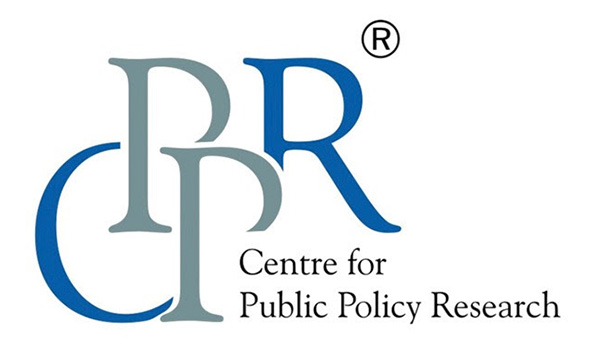Articles

Vietnam and Japan Commit to Partnership for Peace and Prosperity
November 26, 2021
Kochi city has nothing to cheer despite topping Niti Aayog index
November 30, 2021Khadi tangled in regulation, bureaucracy
Trademark and procurement norms are impacting artisans and ease of doing business in the sector

A century ago, Mahatma Gandhi sat behind a spinning wheel and spawned a revolution with a humble cloth called khadi. As a fabric, khadi is unique due to the spinning process which is done by hand. When the spinning process is mechanised, we get handloom or mill-made fabric. Due to this distinction, khadi production is governed by the Khadi and Village Industries Commission (KVIC) under the Ministry of Small and Medium Enterprises (MSME) whereas handloom and mill-made fabric production is governed under the Ministry of Textiles. Today the traditional charkha has been more or less completely abandoned for the much swifter amber charkhas, solar charkhas and new model charkhas which are semi-mechanised.
With the spinning process no longer being done by hand, the khadi sold by most if not all KVIC approved entities is not definitionally khadi (i.e., handspun and handwoven). However, in legal terms, the khadi being sold by KVIC approved entities is “khadi” by the virtue of the accompanying khadi mark. The few khadi sellers in the market, who produce authentic “handspun and handwoven” cloth, consciously avoid using the term khadi to evade a legal tussle with KVIC.
Today, khadi cannot be sold in the country without attaching the khadi mark tag/label as prescribed by the Khadi Mark Regulations, 2013. The proprietorship of the trademark “khadi” has put KVIC in a disproportionately powerful position. Over the years, KVIC has served legal notices to more than 1,000 firms alleging them of producing and affixing the word “khadi” to their fabric. In the same breath, KVIC has implored Indians to buy only genuine Khadi products from KVIC approved entities.
The question of authenticity
So what gets classified as Khadi? First, is the khadi being sold by KVIC-approved entities genuine khadi as is claimed by the khadi mark certification? Second, are all non-khadi mark entities selling fabric in the brand name khadi producing inauthentic khadi products?
Khadi is a distinct kind of fabric that is defined by its production process. As such, any handspun and handwoven cloth is essentially khadi. In such a case,can “khadi” be trademarked at all?
In the past KVIC has discouraged business entities from using terms such as “handwoven” and “handspun” for their fabric. So autonomous artisans not possessing a khadi mark certificate are particularly vulnerable. These restrictive practices of KVIC have inadvertently obstructed avenues for artisans where they can realise better wages for their skills.
The legislation which was introduced to authenticate genuine khadi products is now used by the KVIC to contest private khadi sellers in the market. There are also many compliance requirements that slow down the business operations in the sector.
One of the functions of KVIC, is to build up reserves of raw materials and supply them. This function has been interpreted in a rigid manner as restrictions have been imposed on Central Sliver plants (CSPs) and Khadi Institutions (KIs) regarding the procurement of raw materials — cotton, wool and silk.
CSPs are directed to procure cotton from Cotton Corporation of India (CCI) only. If cotton is not available with the CCI, the CSPs are allowed to purchase from the open market with a certification/quotation from CCI. Purchase of cotton from the open market by the Kls and CSPs are also regulated by the KVIC with the constitution of a Purchase Committee.
Khadi institutions producing Khadi using the traditional charkha have to strictly follow the tender process by issuing advertisements in the local newspaper. Other compliances also include proof of source of purchase, stock entry for raw materials, stock insurance and maintenance of other records/registers. Similar procedural restraints are put on Khadi Institutions which work on New Model Charkha too.
KVIC’s interpretation of this function has led to the creation of an archaic procurement policy that operates within the purview of KVIC. Such restrictions and compliances are outdated and seriously harm the ease of doing business in the Khadi sector. Liberalising the procurement process can help stakeholders in sourcing raw materials from their seller of choice and at competitive prices. It can also ease the requirement of various compliances attached to the procurement process.
The way forward
It is time to reassess some of these regulatory policies and undo the bureaucratic procedures in order to restore the khadi fabric’s lost glory. It is also crucial to distinguish between the various kinds of khadi available in the market based on the extent of labour that goes into the spinning process.
It will allow artisans producing traditional khadi through hand spinning to earn the right value for their products. There is immense untapped potential in rural India that will be vital in preserving the ancient art of ‘khadi’ while providing gainful employment to many, especially women.
This article was written by Nissy Solomon and Akanksha Borawake.
NISSY SOLOMON is Senior Associate, Research and AKANKSHA BORAWAKE is Former Associate, Research at Centre for Public Policy Research. Views expressed by the authors are personal and need not reflect or represent the views of Centre for Public Policy Research.
This article was first published in The Hindu Business Line
Nissy Solomon is Hon. Trustee (Research & Programs) at CPPR. She has a background in Economics with a master’s degree in Public Policy from the National Law School of India University, Bangalore. After graduation and prior to her venture into the public policy domain, she worked as a Geographic Information Systems (GIS) Analyst with Nokia-Heremaps. Her postgraduate research explored the interface of GIS in Indian healthcare planning. She is broadly interested in Public Policy, Economic Development and Spatial Analysis for policymaking.

